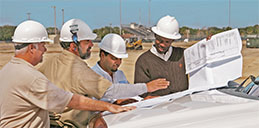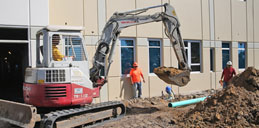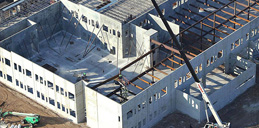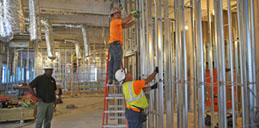Technology is changing the Construction Industry for the Better
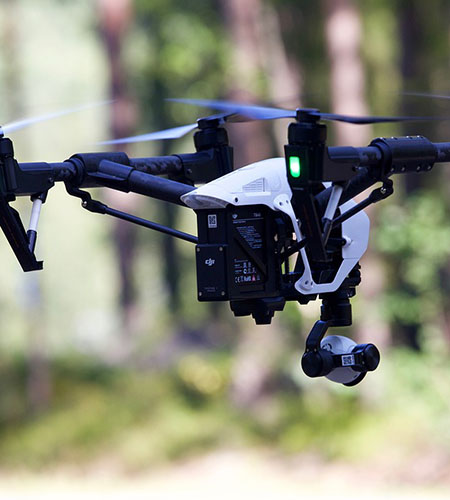 Over the last couple of years, the emergence of new technology has revolutionized the way many industries operate, and just like many other industries, the construction industry is changing for the better.
Over the last couple of years, the emergence of new technology has revolutionized the way many industries operate, and just like many other industries, the construction industry is changing for the better.
As more and more technologies emerge in the construction industry, construction professionals will need to stay up to date with the latest technological breakthroughs which will continue to improve construction efficiency and productivity.
Drone Surveying
Drones or unmanned aerial vehicles (UAV) are rising in popularity everyday, and they already have a made a big impact on many construction sites around the globe. One of the game changing ways in which the drones are currently being used is as a replacement for traditional surveying methods.
Today, drones equipped with high resolution digital cameras and specialized software, are being utilized for surveying sites, especially in the exceedingly large construction sites. This is because drones can quickly and efficiently gather complete information on a particular construction site regardless of terrain. These UAVs are actually making the surveying process less time consuming and less cumbersome. Their efficiency also eliminates human error which is usually involved in traditional surveying methods.
Drones also allow contractors working on larger projects to obtain clear aerial analysis of areas which are difficult to reach during a manual inspection; this helps construction managers make better informed decisions about the architectural and the design elements of a project.
3D Printing
3D printing has advanced greatly in the last couple of years. Technological advancements and a reduction in costs have made 3D printing a viable option in the construction industry. It can significantly cut the costs and time it takes to produce complex building forms. This helps improve project planning and productivity while reducing supply and labor costs, and wastes. In addition to the time and cost benefit of 3D printing construction materials, this technology allows for creating much more durable materials. In fact, construction materials like composites, extruded concrete and plastics can now be easily constructed via 3D printing. Recently, an office building in Dubai was constructed entirely of 3D printed materials, the first of its kind. And a 3D printed skyscraper is in the works.
Driverless Vehicles and Equipment
Soon the days of construction workers sitting behind the wheel of a bulldozer will be a thing of the past. Driverless vehicles and equipment such as bulldozers and dump trucks can help reduce the number of potentially costly injuries and delays in the construction project, and may also help avoid worker fatigue by simplifying construction projects. It also allows skilled labor to be utilized more efficiently which can reduce the time it takes to complete a construction project allowing companies to be more competitive.
Another benefit of driverless vehicles and equipment is that they can be operated from remote locations around the clock. And the technicians operating the vehicles and equipment do not need to be physically located on the construction site. They can easily control construction equipment from nearly anywhere in the world.
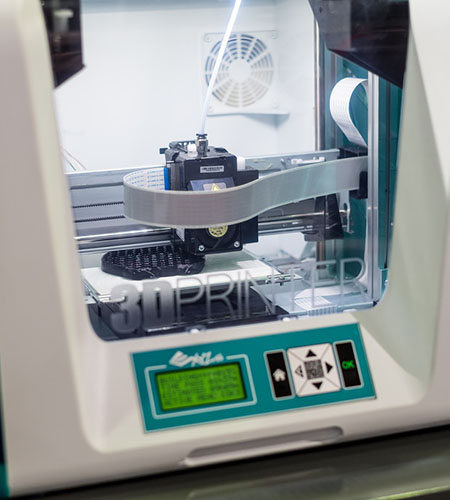 Building Information Modeling (BIM)
Building Information Modeling (BIM)
One of the most significant advances in new technologies in the construction industry is BIM, also known as Building Information Modeling. BIM is a 3D modeling process that is replacing traditional blueprints. Unlike traditional blueprints, BIM prototypes are 3D renderings which provide builders and contractors with a virtual 3D walk-through of a proposed construction project, drilled down to each required component. The BIM rendering can include information on exterior surfaces and interior walls, windows, doors and even plumbing fixtures. BIM essentially builds the entire project digitally (from start to finish), before construction actually begins. This allows contractors to spot potential problems ahead of time. The BIM digital prototype also serves as a reliable library of information for layout, construction, design and maintenance.


